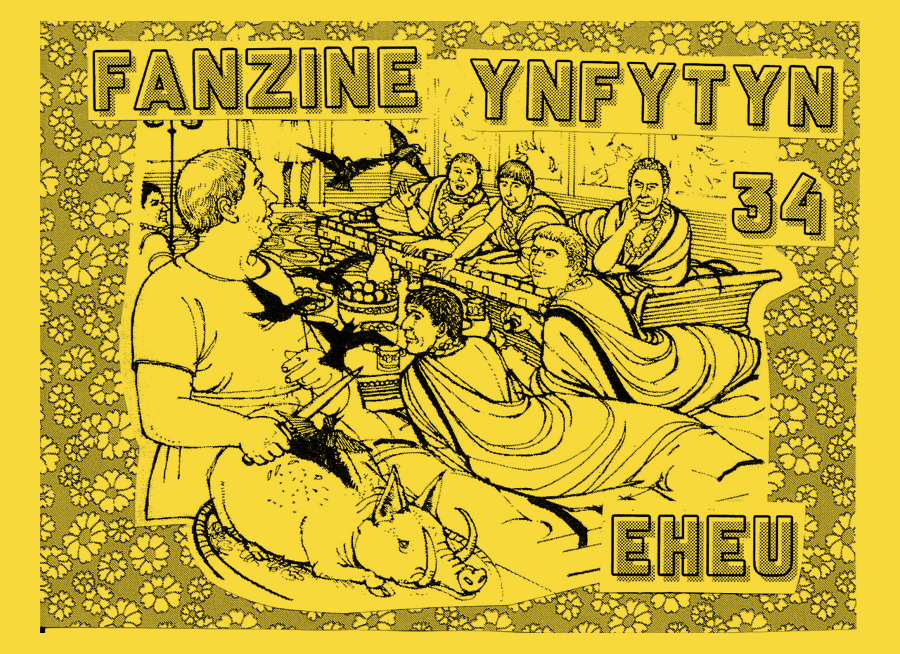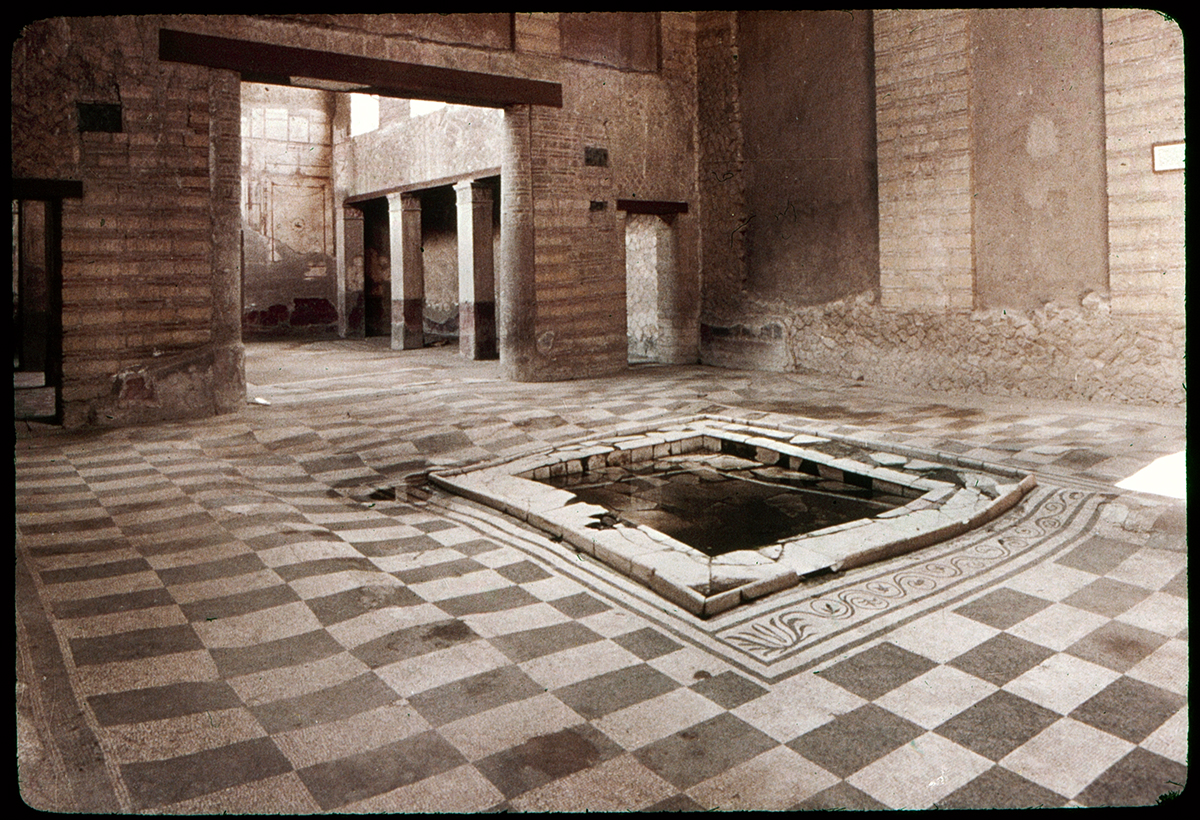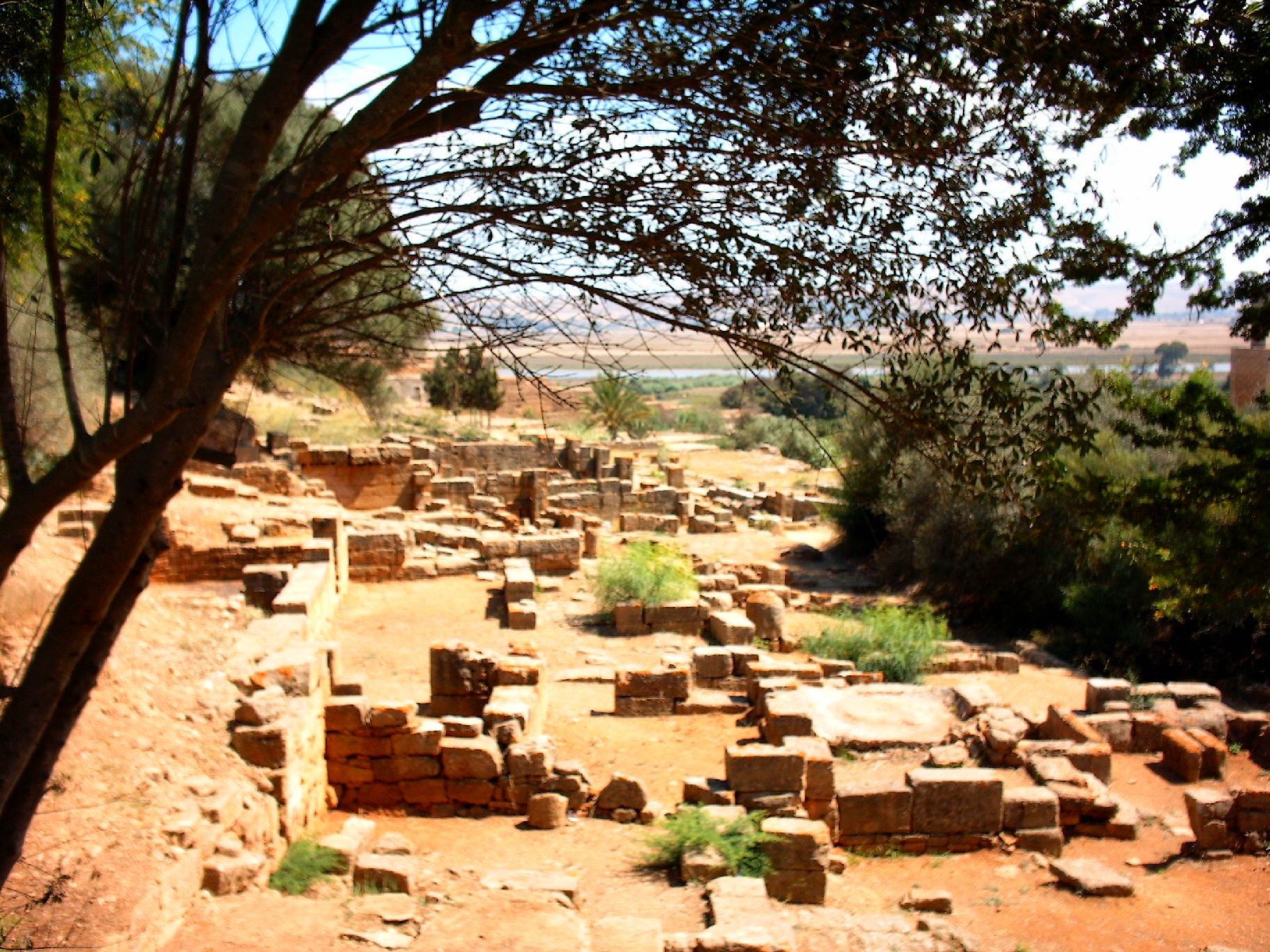
If you study Latin in the UK, there’s a very good chance you will use the Cambridge Latin books from the 1970s. Although they’re forty years old, they’re still in print (and also on the Apple Store), and have a special place in people’s hearts.
They use a combination of illustrated comics with a very distinctive art style (which I got the illustrations for this zine from) and short stories to introduce new vocabulary, grammar and social history. The thing that makes them stand out from other school textbooks is the incredibly melodramatic storyline, full of death, assassinations and double entendres. The people who wrote these books were thoroughly enjoying themselves.
The Cambridge Latin Course, digested:
(Look away if you don’t want to be spoilered for that five-year Latin course you’re about to embark on)
Book One:

Caecilius est in horto. This is where he usually is. The hortum is in Pompeii. Caecilius was a real person, and you can visit his house.
Grumio the chef delights all the slave girls. (And Caecilius’ wife Metella).
Everyone gets killed by Vesuvius, except for Quintus the son, and Clemens, one of the slaves. The dog gets a tragic death scene
Book Two:

Quintus turns up in Roman Britain to visit his cousin and her dodgy politician husband Salvius
We meet King Cogidubnus, Roman client king and ruler of Sussex
Quintus tells the court the tale of his adventures in Alexandria:
Clemens’ attempts to set up a pottery shop, the ensuing run-in with the Egyptian Mafia, crocodile wrestling, the death of the beautiful Egyptian boy, the plots of the dodgy astrologer
Book Three:

Salvius plots to assassinate Cogidubnus as part of a power grab
Cogidubnus goes on a visit to the water temple at Bath for his health
Salvius does a deal with a dodgy priest in Bath to give Cogidubnus poisoned holy water
Quintus uncovers the plot and has to go on the run
Cogidubnus dies of poisoning
Book Four:

Salvius is back in Rome- he helps make a plot with dodgy builder Haterius to bump off the famous actor the emperor’s wife is having an affair with
Book Five:

Salvius is on trial for forging Cogidubnus’ will.
Quintus turns up as surprise star witness. Salvius kills himself in the bath laughing “they’ll never catch me now” (this was an approved end for Roman villains)
Fanzine Ynfytyn 32 + 34
I’ve also got a pack of two classics-related zines on the shop for £2.50. You can find them here.

Issue 34:
24 page 1/4 sized perzine on gold paper about studying Classics and Ancient History
- The Cambridge Latin Course- death by volcano, poisoned holy water or crocodile?
- Why actually studying Classics is nothing like Donna Tartt’s novel
- Roman love poet rundown: Tibullus is a soft wet boy
- I am bad at Medieval Latin. Don’t worry, so were medieval monks on the whole.
- Site visits to Rome, Aquae Sulis, Pompeii, Catullus’ house, Fishbourne Palace and various Roman graveyards



Issue 32:
24 page 1/4 sized perzine on purple paper
- Suspicious whispering
- The joys of Latin
- Cogidubnus
- Aquariums
- Oulipo word games


Site visits:
Bonus: a section from issue 34 I ended up cutting for space
The Palatine and Forum – Rome
The Palatine is where the Roman Emperors had their palaces (hence the name). The Forum still has the ruins of the temples and other buildings surrounding it- the scale is huge. I visited mid-Winter when there was practically no-one there, something I highly recommend.
However on the same trip my passport was stolen in the Vatican. To get a temporary passport from the UK embassy, we needed a police certificate that it was stolen. Whose jurisdiction this came under was debatable however, especially as there are several kinds of police in Italy.
While chasing round different police stations to get this thing stamped, someone used my passport to cross a border. Resulting in it taking around six months to get a new passport, and five or six years of being pulled aside for extra questioning every time I travelled abroad, even within Europe. I have scanned but not yet posted some 1960s slides of the site- they will be here eventually.
Caecilius’ house – Pompeii

Lucius Caecilius Iucundus was a real person and you can visit his house. It has a mosaic doormat with a design of a greyhound type dog very similar to the dog in the textbook. Pompeii is all dust and endless geometric avenues and stepping stones across the streets.
The Roman graffiti is still in evidence and some of the courtyards of the grand houses have been re-planted with same plants that grew there in Roman times. You can see some 1960s slides of neighbouring Herculaneum I scanned here.
Grotte di Catullo – Sirmione

This is probably more like the Roman equivalent of a motel rather than the actual house of Catullus – there’s no strong historical evidence for the attribution, but it’s still a very impressive sight, jutting out on a peninsular into Lake Garda. You can see my photos here.
Roman Baths – Bath

Full of steaming sulphuric water and defixiones (curse tablets) fished out from the water wishing doom on the rival chariot team and the man who stole the writer’s sandals from the changing rooms. The home of Roman religious syncretism – dedicated to both Celtic Sulis and Roman Minerva.
Silchester – Reading
Silchester is the could’ve should’ve would’ve been of Roman cities in England. It’s a sizeable place, and mostly forgotten, apart from Archaeology students from the University of Reading going to practice there. My friend Rupinder found a Roman earring on a practice dig. It’s also right next to Aldermaston nuclear weapons research base. When I used to go there in my university days, the neighbouring cottage had llamas in the garden.
Fishbourne Palace – Chichester

A luxurious Romano-British palace near Southampton. No, King Cogidubnus was not assassinated sighs the tour guide wearily, after too many people visit who have learnt from the Cambridge Latin Course. You can see my photos here.
Elaborate mosaics, fresco paintings and 60s indoor swimming pool vibes in the museum.
Chellah Roman military graveyard in Rabat, Morocco

At last all those lessons on how to read Roman gravestone abbreviations are of use! An impressive site with a mix of Roman buildings and later Marabout tombs. You can see photos here.
Leave a Reply